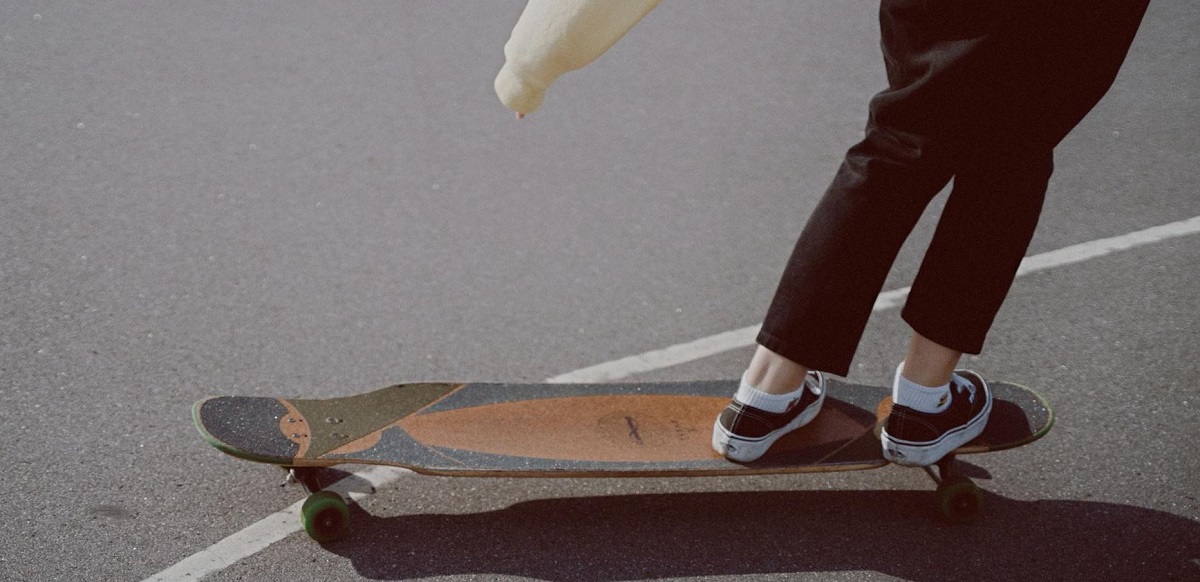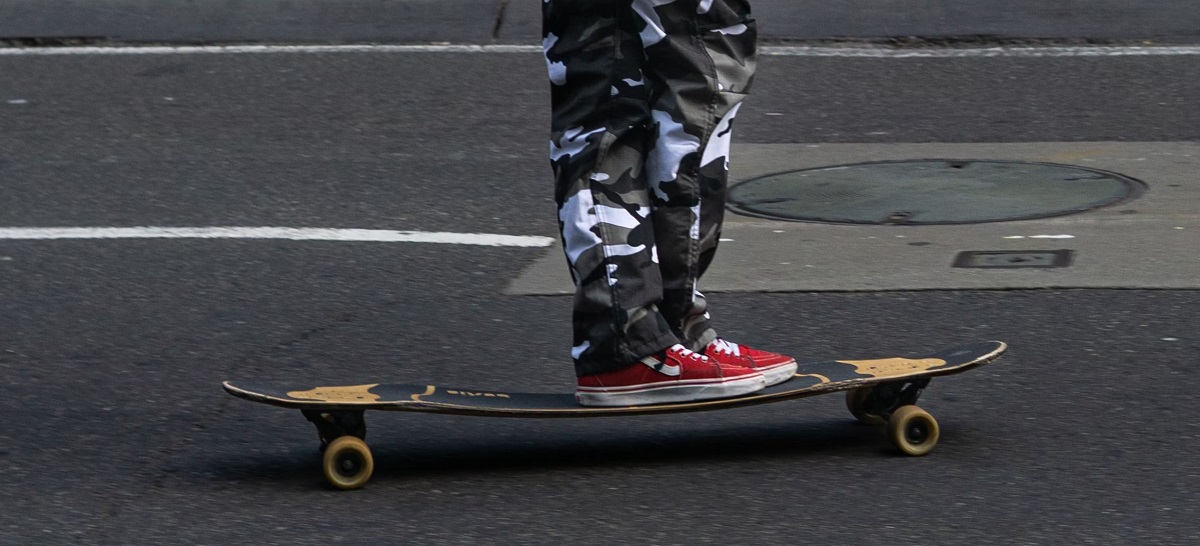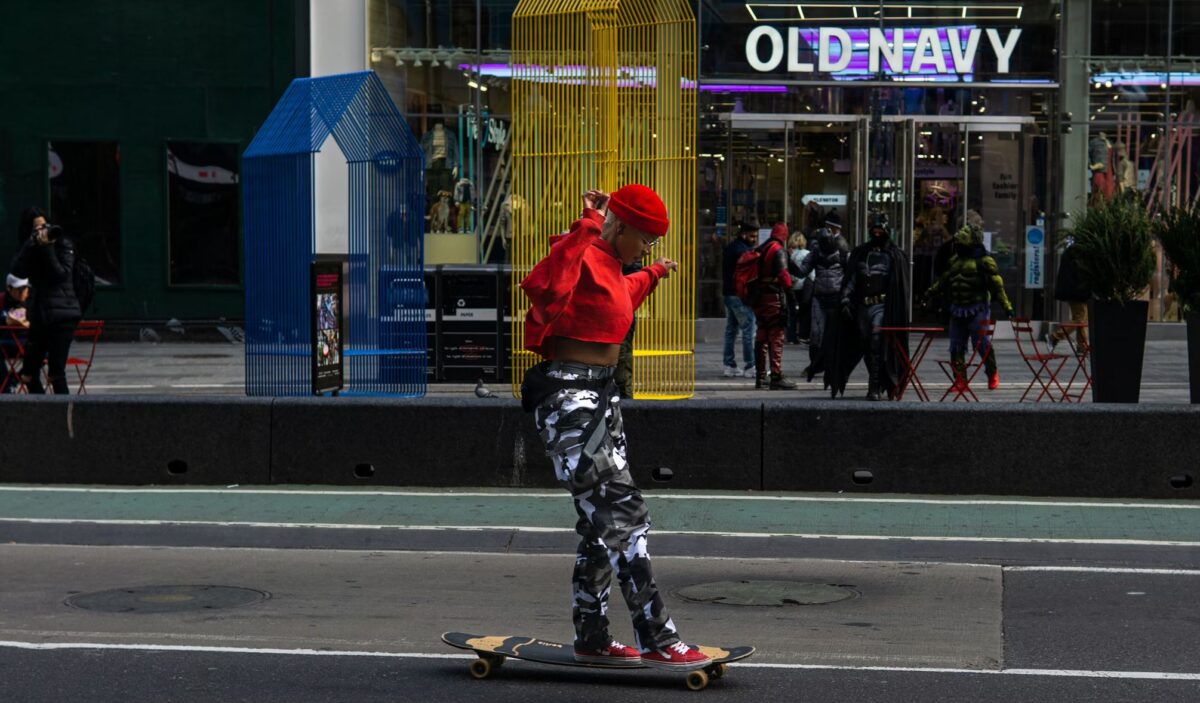Most folks think of downhill speed runs, slalom courses, and simple carving and cruising when they imagine longboard riding — but these long, wide, naturally stable boards provide the perfect moving platform for puttin’ on some footwork and bona fide dance moves while you push and roll.
So, What is Longboard Dancing?
It’s exactly what it sounds like: Dancing on your longboard! This is, of course, done while you’re pushing and moving. When you’re longboard dancing, you’re also controlling your board’s movements — in other words, you’re using fancy footwork to dance and to control the lean and direction of your board at the same time.
(Longboard Dancing Isn’t Freestyle)
Longboard free-styling involves similar footwork, though there’s a key difference between freestyle riding and longboard dancing. Freestyle riding involves doing tricks on your board — but these tricks involve setups, and they’re usually performed in isolation. Tricks may also involve manipulating the board by spinning or flipping it.
Longboard dancing involves stringing together multiple forms of footwork with rhythm (sometimes using music and a beat) to create an actual dance routine, while the board remains planted on the ground.
“What longboard’s best for dancing?”

The bigger the board, the better. A wide board with a symmetrical shape is ideal for beginners. We recommend a platypus board (pictured above), and one that measures at least 40″ long, for beginners. Our Skeleton Rose longboard is a crowd favorite — it provides the perfect platform for longboard dancing, and it looks good to boot!
The Pintail is also a popular option, given its extra length and straight-line stability. Read our Guide to Longboard Shapes to see more detailed options.
“How do I get started?”

Before learning to longboard dance, you need to be comfortable cruising, pushing, and carving. Learn to have balance and control of your board at speed — you’ll need plenty of momentum to keep your board moving while you learn to string together dance moves.
Dancing involves twisting and planting your feet on the board’s deck at varying angles. You’ll often wind up standing near the tip or tail of the board, too, like shown above. So, it pays to first learn to just ride, turn, and carve with confidence.
Learning to Dance: The Five Big Tricks

Ready to dance? Learn these five big tricks below, and you’ll have most of the skills needed to dance like a pro. But before we get started, know that practicing longboard dancing can be risky. You’ll probably suffer a fall (or two, or five) while you learn the footwork — so make sure you’re wearing a skate helmet and skate pads!
NOTE: The instructions we describe below are for riders who ride “regular,” facing the right side of the board with the left foot forward, and the right foot rearward and pushing. Reverse these instructions if you ride “goofy”.
180-Degree Steps
This is the first move you should learn in longboard dancing.
Learning 180-degree steps will get you comfortable with some critical skills needed to perform other moves, like switching your stance between regular and goofy, and riding with your feet planted near the nose and tail of the board.
To perform the 180 Step, slide your left foot back to the rear of the board, until it touches your right foot. Your right foot should be planted atop the rear truck. Now lift your right foot up. Swing it out and forward, in a half counter-clockwise motion, before planting it near the nose of the board.
While doing so, rotate your body from right to left. Your right foot — and you — should be facing the left side of the board. Rotate your left foot after planting your right foot down so it, too, is facing the left side of the board. Your stance will now be “goofy.”
Now comes the challenge: Repeat these steps once more by sliding your left foot toward the nose of the board, and again swing your right foot out and toward the tail of the board while rotating your body.
You will momentarily be facing backwards while doing this. Complete the second 180-degree rotation and readjust your feet until you’re once again riding “regular.”
Watch this video from Dutch Longboard Society to see the 180 step in action.
The Pirouette
The Pirouette builds on the 180 Step, effectively turning the trick into a full rotation using just the leading foot. To perform the Pirouette, lift your right foot off the ground after a push, and keep it held in the air. Look over your left shoulder while bringing your arms out to stabilize your posture.
Rotate your body on the ball of your left foot with enough power to spin 360 degrees. Keep your right foot outward and pointed down at the ground for added stability. At the completion of the rotation, plant both feet back on the board.
This trick requires commitment. You simply need to put enough speed and force into your spin to ensure a full rotation, making this a good confidence builder for beginner longboard dancers who want to build momentum and perform a fluid series of tricks.
Watch how the Pirouette is done by Dutch Longboard Society.
The Cross-Step
While your board’s rolling forward, plant your right foot near the rear the board, atop the truck. Slide your left foot back until it touches your right foot. Now lift your right foot up, and swing it out and around your left foot.
Plant your right foot in front of your left foot. Your knees will be crossed momentarily. Now raise your left foot, and swing it back out from behind your right leg. Plant your left foot back in front of your right foot.
You can repeat the Cross-Step by once again moving your right foot backward to rest atop the rear truck before following the steps above again.
See this video from Dutch Longboard Society to practice the Cross-Step.
After you’ve mastered the basic Cross-Step, you can advance the move by learning to “catwalk” from the rear of the board to the nose, alternative the steps.
Watch this video from @pulidouser to see the advanced Cross-Step move in action.
View this post on Instagram
The Ghost Ride
The Ghost Ride (no, we didn’t name this move, but it’s fitting!) involves jumping off and back on your board, letting your board roll along by itself for a moment. Like the Cross-Step, this move requires crossing the right foot over the left foot.
After performing a push to get momentum, keep your right foot raised in the air and bring it over the left foot. With the right foot hovering over the pavement on the left side of the deck, jump off the board with your left foot.
Your legs will be crossed while you’re in the air. As you land on the ground with your right foot, swing your left foot back out and around your right leg in a clockwise motion, bringing it back up and atop the board. Jump back on the board with the left foot leading.
See this video from Dutch Longboard Society for how the Ghost Ride works.
The Shuvit
Wanna introduce some O.G. skate style in your longboard dance routine? The Shuvit works just as well for longboards as it does for skateboards! Given the weight of your board, you’ll be sliding it more in rotation than getting air, like you would on a regular skateboard.
To perform the Shuvit, plant your right foot on the tail of the board. Your left foot should be centered on the deck. Pop the tail with your foot to raise the front truck off the ground. While popping the tail, you’ll need to also drag the tail with your right foot to introduce rotation to the board.
Get enough pop and rotation to rotate the board 180 degrees before planting both feet back down on the deck.
See this video from Dutch Longboard Society for an example of the Shuvit.
Now String ‘Em Together!
With these five longboard dance tricks — the 180 Step, Pirouette, Cross-Step, Ghost Ride, and Shuvit — you can work on building a dance routine! Test which tricks transition well from one to the other until you’ve nailed down a good flow.
Want to build the perfect longboard for dancing? We can do it for you! Check out our Custom Longboard Build Page. We can create a custom-cut deck with a specific shape, width, and length (and custom graphics) to optimize it for dancing.
Read our detailed guides below to dial in the perfect setup:


